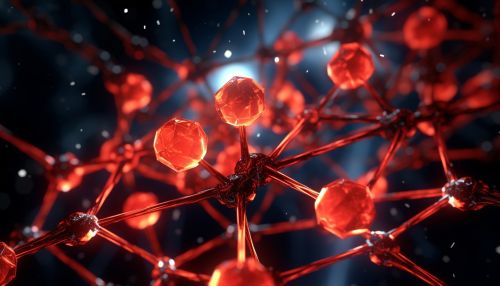Luciferase
Introduction
Luciferase is a generic term for the class of oxidative enzymes used in bioluminescence and is distinct from a photoprotein. The name was first used by Raphaël Dubois who invented the words luciferin and luciferase, for the substrate and enzyme, respectively. Both words are derived from the Latin word lucifer – meaning lightbringer.
Biochemistry
Luciferases are widely used in the field of biochemistry for studying various aspects of cellular functions. They catalyze the oxidation of luciferin, a reaction that results in light emission. This reaction is highly efficient, and therefore, the light produced can be easily detected. Luciferases can be categorized into different types based on the nature of the luciferin they oxidize.


Types of Luciferase
There are several types of luciferase, each of which is specific to a particular organism. These include firefly luciferase, bacterial luciferase, and Renilla luciferase, among others.
Firefly Luciferase
Firefly luciferase is perhaps the most well-known type of luciferase. It is found in the firefly Photinus pyralis and is used in a wide range of biological research. Firefly luciferase catalyzes the oxidation of firefly luciferin in the presence of ATP, magnesium ions, and oxygen to produce light, AMP, and a molecule of pyrophosphate.
Bacterial Luciferase
Bacterial luciferase is a multi-enzyme complex that catalyzes the oxidation of a long-chain aldehyde and reduced flavin mononucleotide (FMNH2) to produce light. This type of luciferase is found in several species of bioluminescent bacteria.
Renilla Luciferase
Renilla luciferase is found in the sea pansy Renilla reniformis. It catalyzes the oxidation of coelenterazine to produce light. This type of luciferase is often used as a reporter gene in molecular biology research.
Applications
Luciferases have a wide range of applications in scientific research. They are used as reporter genes in genetic engineering, as biosensors in medical diagnostics, and in drug discovery.
Reporter Genes
Luciferases are often used as reporter genes in the field of genetic engineering. They are used to measure the activity of other genes. When a gene of interest is linked to a luciferase gene, the light produced by the luciferase can be used to measure the activity of the gene of interest.
Biosensors
Luciferases are also used as biosensors in medical diagnostics. They can be used to detect the presence of specific molecules, such as glucose or ATP, in a sample. The light produced by the luciferase can be measured and used to determine the concentration of the molecule of interest.
Drug Discovery
Luciferases play a crucial role in drug discovery. They are used in high-throughput screening assays to identify potential drug candidates. The light produced by the luciferase can be used to measure the effect of a drug on a particular biological pathway.
